- The Importance of Phosphorus Fertilisers in Crop Production
- Enhancing Plant Growth and Development
- Increased Root Development
- Improved Energy Transfer
- Enhanced Flowering and Fruit Development
- Stronger Stems and Leaves
- Enhanced Nutrient Uptake
- Supporting Root Formation
- Different Types of Phosphorus Fertilisers
- Organic Phosphorus Fertilisers
- Advantages of Organic Phosphorus Fertilisers
- Types of Organic Phosphorus Fertilisers
- Application of Organic Phosphorus Fertilisers
- Inorganic Phosphorus Fertilisers
- Factors Affecting the Effectiveness of Phosphorus Fertilisers
- Soil pH and Phosphorus Availability
- Phosphorus Fixation and Immobilization
- Factors Affecting Phosphorus Fixation and Immobilization
- Implications for Phosphorus Fertilizer Management
- Conclusion
- Methods of Phosphorus Fertiliser Application
- 1. Broadcasting
- 2. Banding
- 3. Side-dressing
- 4. Foliar Spraying
- 5. Injection
- 6. Incorporation
- 7. Fertigation
- Conclusion
- Q&A:
- What are phosphorus fertilisers?
- Why is phosphorus important for plants?
- What are the different types of phosphorus fertilisers?
- How should phosphorus fertilisers be applied?
- Are there any environmental concerns associated with phosphorus fertilisers?
- Video: 5 most richest sources of Phosphorus for your plants. #gardeningtips #gardeningideas
When it comes to plant growth and development, phosphorus is an essential nutrient. Phosphorus fertilisers are used to provide plants with this vital element, ensuring optimal growth and yield. But what exactly are phosphorus fertilisers, and how do they work?
Phosphorus fertilisers are types of fertilisers that contain high levels of phosphorus. This nutrient is one of the three primary macronutrients required by plants, along with nitrogen and potassium. Phosphorus plays a crucial role in plant genetics, energy transfer, and root development. Without sufficient phosphorus, plants may exhibit stunted growth, reduced flowering, and poor fruit or seed production.
The availability of phosphorus in the soil is often limited, as it can quickly become bound to other minerals and organic matter. This is where phosphorus fertilisers come in. They provide plants with a supplemental source of phosphorus, allowing them to access this vital nutrient more easily. Phosphorus fertilisers can be applied in various forms, including granules, powders, liquids, and even as organic amendments. This versatility makes them suitable for a wide range of crops and growing conditions.
It is important to note, however, that phosphorus fertilisers should be used judiciously. Excessive phosphorus application can lead to environmental issues, such as water pollution. Additionally, the effectiveness of phosphorus fertilisers depends on numerous factors, including soil type, pH, and the presence of other nutrients. Therefore, it is crucial to consider these factors and follow recommended application rates when using phosphorus fertilisers.
The Importance of Phosphorus Fertilisers in Crop Production
Phosphorus is an essential nutrient for plants and plays a crucial role in crop production. It is a primary macronutrient along with nitrogen and potassium, and it is required in relatively large quantities compared to other essential elements. Phosphorus is involved in numerous biochemical processes and is essential for energy transfer, cell division, and the development of healthy root systems.
Enhanced Root Development: Phosphorus fertilisers are key to promoting root growth and development in crops. Adequate phosphorus levels in the soil ensure healthy root systems, which enable plants to absorb water and nutrients more efficiently. This promotes overall plant growth and productivity.
Improved Nutrient Uptake: Phosphorus plays a vital role in converting other nutrients into forms that are readily available for plants. It helps in the conversion of nitrogen into amino acids, which are building blocks of proteins. This process increases the efficiency of nitrogen uptake and utilization by plants.
Promotion of Flowering and Fruiting: Phosphorus is essential for the development of flowers and fruits. It stimulates flower initiation, improves flower quality, and enhances fruit set. Phosphorus fertilisers can significantly increase crop yield and improve the quality of harvested fruits and vegetables.
Enhanced Photosynthesis: Phosphorus is involved in the energy transfer process in plants. It is a crucial component of adenosine triphosphate (ATP), which is the primary energy carrier in cells. Adequate phosphorus levels in the soil ensure efficient energy transfer during photosynthesis, leading to increased plant productivity.
Stress Tolerance: Phosphorus plays a critical role in enhancing crop resilience to environmental stresses. It helps plants to develop stronger cell walls, which provide structural support and protect them from diseases, pests, and adverse weather conditions. Phosphorus fertilisers can help crops withstand drought, cold, and other environmental challenges.
Soil Fertility and Sustainability: Phosphorus is an essential component of soil fertility. Continuous crop production and nutrient uptake can deplete the soil of phosphorus over time, making fertilisation necessary for maintaining optimal phosphorus levels. Adequate phosphorus fertilisation practices contribute to sustainable agriculture by ensuring the long-term productivity and health of soils.
Overall, the use of phosphorus fertilisers is crucial for crop production. It not only promotes plant growth, flower and fruit development, and nutrient uptake but also contributes to the sustainability and productivity of agricultural systems. Farmers and growers need to carefully manage and provide appropriate phosphorus fertilisation to optimize crop yield and quality.
Enhancing Plant Growth and Development
Phosphorus fertilisers play a crucial role in enhancing plant growth and development. They provide essential nutrients that are necessary for plants to carry out various physiological processes and ensure optimal growth.
Increased Root Development
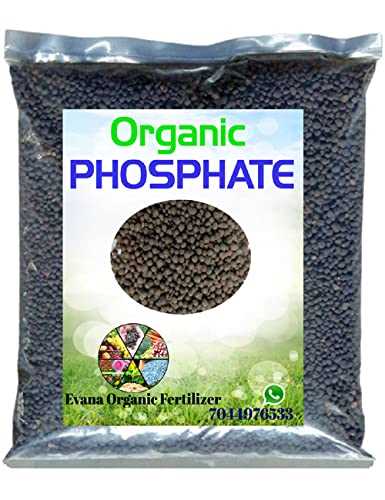
- Phosphorus fertilisers promote the growth of a strong and healthy root system. The roots of plants absorb phosphorus from the soil, which helps in the development of new roots and improves their overall health.
- With a well-developed root system, plants can efficiently extract water and nutrients from the soil, leading to better overall growth and development.
Improved Energy Transfer
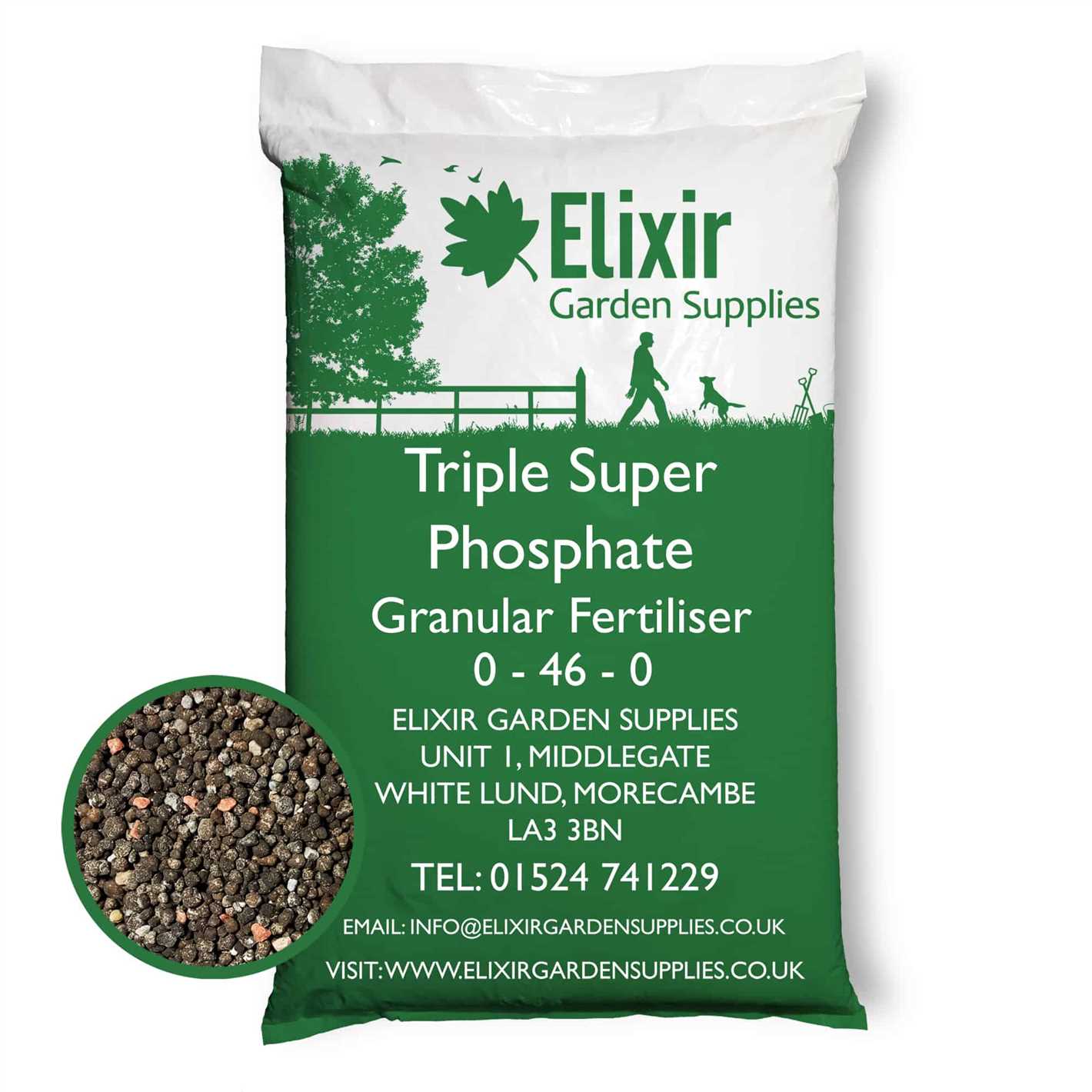
- Phosphorus is essential for the process of photosynthesis, where plants convert sunlight into energy. It is a key component of adenosine triphosphate (ATP), a molecule that carries energy within cells.
- By providing phosphorus to plants, fertilisers enhance the energy transfer process, enabling plants to produce more ATP and carry out essential metabolic functions.
Enhanced Flowering and Fruit Development
- Phosphorus fertilisers have a positive impact on flowering and fruiting in plants. They help stimulate the production of flowers, fruits, and seeds.
- Phosphorus is involved in the synthesis of DNA, RNA, and proteins, which are essential for plant reproduction.
Stronger Stems and Leaves
- Phosphorus is a key element in the formation of structural proteins, which provide strength and rigidity to plant tissues.
- By supplying phosphorus to plants, fertilisers promote the development of stronger stems and leaves, making plants more resistant to wind damage and diseases.
Enhanced Nutrient Uptake
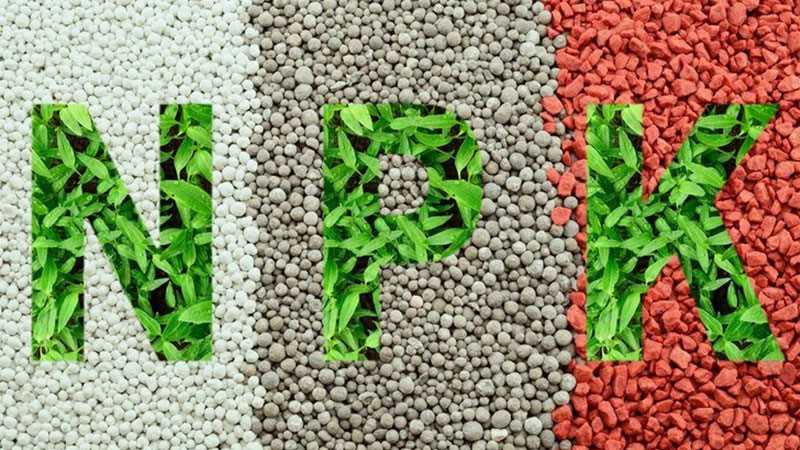
- Phosphorus fertilisers help improve the availability and uptake of other essential nutrients by plants.
- They play a crucial role in activating certain enzymes that are involved in nutrient conversion and transport within plants.
- By ensuring adequate phosphorus levels, plants can effectively utilize other nutrients, leading to overall better growth and development.
In conclusion, phosphorus fertilisers are vital for enhancing plant growth and development. They promote root development, improve energy transfer, enhance flowering and fruit development, strengthen stems and leaves, and enhance nutrient uptake. By providing plants with essential phosphorus nutrients, fertilisers contribute to overall plant health, vigor, and productivity.
Supporting Root Formation
Growing healthy plants begins with strong root development, and phosphorus fertilisers play a crucial role in supporting this process. Phosphorus is an essential nutrient for plants, particularly during the early stages of growth when root formation is critical.
Here are some key points to understand about the role of phosphorus fertilisers in supporting root formation:
- Promotes root growth: Phosphorus aids in the development of strong and extensive root systems. It stimulates cell division and elongation in the roots, allowing them to penetrate the soil more effectively and absorb water and nutrients.
- Enhances nutrient uptake: Phosphorus plays a vital role in the uptake and transportation of other essential nutrients, such as nitrogen and potassium. It helps plants efficiently utilize these nutrients and promotes overall plant health.
- Increases energy production: Phosphorus is involved in the process of photosynthesis, which is crucial for energy production in plants. By supporting photosynthesis, phosphorus promotes the production of carbohydrates, providing the energy needed for root development and overall plant growth.
- Aids in stress tolerance: Phosphorus helps plants withstand various environmental stresses, such as drought, temperature fluctuations, and disease. It strengthens the plant’s defense mechanisms and improves its ability to cope with adverse conditions.
When using phosphorus fertilisers to support root formation, it’s important to apply them correctly. Here are some guidelines:
- Use a phosphorus fertiliser specifically formulated for root development.
- Apply the fertiliser according to the recommended dosage and timing instructions.
- Incorporate the fertiliser into the soil near the root zone to ensure direct contact with the developing roots.
- Avoid excessive application, as phosphorus toxicity can harm plants and the environment.
- Consider conducting soil tests to determine the phosphorus levels and adjust the fertiliser application accordingly.
By understanding the importance of phosphorus fertilisers in supporting root formation and following proper application practices, gardeners and farmers can ensure healthy plant growth and maximize their yields.
Different Types of Phosphorus Fertilisers
Phosphorus is an essential nutrient for plant growth and development. It plays a critical role in the formation of DNA, RNA, and ATP, which are all necessary for proper functioning and growth. Phosphorus fertilisers are used to supplement the soil with phosphorus, ensuring that plants have access to an adequate supply of this nutrient. There are different types of phosphorus fertilisers available, each with its own characteristics and benefits. Here are some common types:
- Triple Superphosphate (TSP): TSP is a highly concentrated phosphorus fertiliser that contains around 46% phosphorus. It is produced by reacting rock phosphate with an acid, resulting in a mixture of monocalcium phosphate and gypsum. TSP is quickly soluble in water and is readily available for plant uptake.
- Diammonium Phosphate (DAP): DAP is a highly water-soluble phosphorus fertiliser that contains both nitrogen and phosphorus. It is produced by reacting ammonia with phosphoric acid. DAP is commonly used as a starter fertiliser due to its high phosphorus content and fast availability to plants.
- Monoammonium Phosphate (MAP): MAP is another water-soluble phosphorus fertiliser that contains both nitrogen and phosphorus. It is produced by reacting ammonia with phosphoric acid, similar to DAP. MAP is often used as a side-dressing or foliar spray fertiliser for crops that require a high phosphorus supply.
- Rock Phosphate: Rock phosphate is a naturally occurring mineral that is rich in phosphorus. It is mined from deposits and processed into a usable form for agriculture. Rock phosphate is a slow-release phosphorus fertiliser that requires microbial activity in the soil to break it down and make it available to plants over time.
- Bone Meal: Bone meal is a phosphorus fertiliser made from ground animal bones. It is an organic source of phosphorus and contains other nutrients like calcium and nitrogen. Bone meal is a slow-release fertiliser that provides a long-term supply of phosphorus to plants.
These are just a few examples of the different types of phosphorus fertilisers available on the market. The choice of fertiliser will depend on factors such as the specific nutrient requirements of the plants, soil conditions, and desired application method. It is important to test the soil and consult with a knowledgeable agronomist or agricultural extension service to determine the most suitable phosphorus fertiliser for your specific needs.
Organic Phosphorus Fertilisers
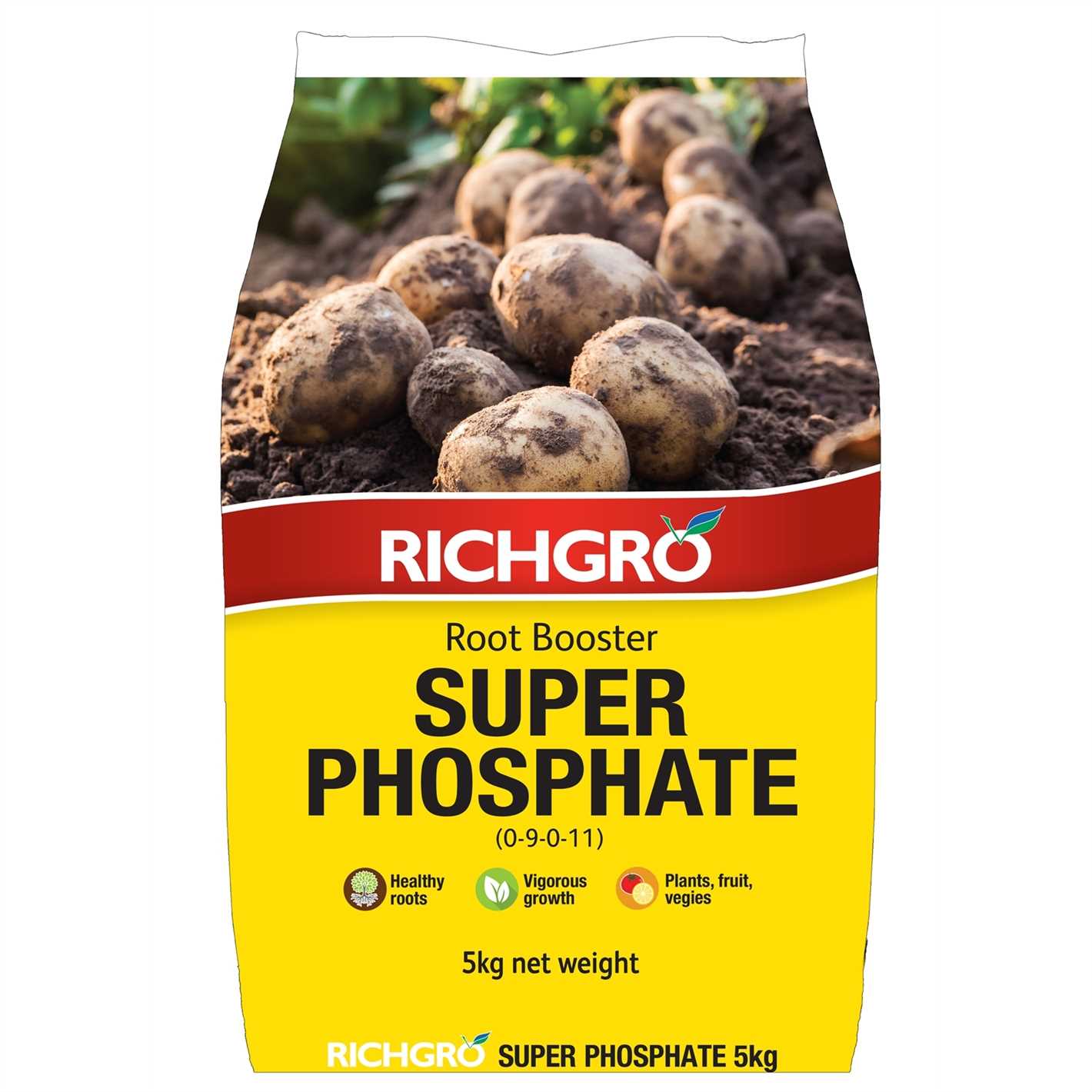
Organic phosphorus fertilisers are a natural and sustainable alternative to synthetic fertilisers. They are derived from organic matter such as compost, manure, bone meal, and rock phosphate. These fertilisers contain organic compounds that release phosphorus slowly over time, providing a steady supply of nutrients to plants.
Advantages of Organic Phosphorus Fertilisers
- Natural: Organic phosphorus fertilisers are made from natural sources and do not contain any synthetic chemicals or additives. This makes them safe for the environment and reduces the risk of chemical runoff.
- Sustainable: Since organic phosphorus fertilisers are made from organic matter, they help to improve soil health and fertility in the long term. They also promote the growth of beneficial soil microorganisms, which further enhance nutrient availability.
- Slow Release: Organic phosphorus fertilisers release their nutrients slowly over time, which reduces the risk of nutrient leaching and ensures a steady supply of phosphorus to plants. This helps to prevent nutrient imbalances and promotes more efficient nutrient uptake.
- Improves Soil Structure: Organic phosphorus fertilisers improve soil structure by enhancing water retention and drainage. This helps to create a healthy root environment and improves overall plant growth and productivity.
Types of Organic Phosphorus Fertilisers
There are several types of organic phosphorus fertilisers available:
- Compost: Compost is a valuable source of organic matter and nutrients, including phosphorus. It can be added to soil as a top dressing or incorporated during planting to improve soil fertility.
- Manure: Animal manure, such as cow, chicken, or horse manure, is rich in phosphorus. It can be composted or applied directly to the soil to provide a slow-release source of nutrients.
- Bone Meal: Bone meal is made from crushed bones and is high in phosphorus. It can be mixed into soil or used as a side dressing around plants to promote healthy root development.
- Rock Phosphate: Rock phosphate is a naturally occurring mineral that contains high levels of phosphorus. It is typically ground into a fine powder and added to soil or compost to provide a long-lasting source of phosphorus.
Application of Organic Phosphorus Fertilisers
Organic phosphorus fertilisers should be applied based on the specific needs of the plants and the nutrient requirements of the soil. It is important to follow the instructions provided by the manufacturer and avoid over-applying the fertilisers, as excessive phosphorus can lead to nutrient imbalances.
| Organic Phosphorus Fertiliser | Application Rate |
|---|---|
| Compost | Apply 1-2 inches as a top dressing or incorporate into soil |
| Manure | Apply 1-2 inches as a top dressing or mix into soil |
| Bone Meal | Apply 1-2 tablespoons per plant or as recommended |
| Rock Phosphate | Apply 1-2 pounds per 100 square feet or as recommended |
It is also important to ensure that the fertilisers are evenly distributed and incorporated into the soil to maximize nutrient availability. Watering the fertilised area after application helps to activate the nutrients and promote their uptake by plants.
Inorganic Phosphorus Fertilisers
Inorganic phosphorus fertilisers are synthetic products that are manufactured through various chemical processes. They are typically made from phosphate rock, which is a naturally occurring mineral that contains high levels of phosphorus.
There are several types of inorganic phosphorus fertilisers, including:
- Diammonium phosphate (DAP): This is a widely used phosphorus fertiliser that contains both nitrogen and phosphorus. It is a granular product that is easily blended with other fertilisers.
- Monoammonium phosphate (MAP): Similar to DAP, MAP is also a granular product that contains nitrogen and phosphorus. It is commonly used in areas with alkaline soils.
- Triple superphosphate (TSP): TSP is a highly concentrated phosphorus fertiliser that contains around 46% phosphorus. It is typically used in areas with low phosphorus levels in the soil.
- Single superphosphate (SSP): SSP is another concentrated phosphorus fertiliser that contains around 16-20% phosphorus. It is less concentrated than TSP but still provides a significant amount of phosphorus.
Inorganic phosphorus fertilisers are usually water-soluble, which means they can be quickly absorbed by plants. They are often applied to the soil before planting or as a top dressing during the growing season. The application rate of inorganic phosphorus fertilisers depends on several factors, including the soil type, crop type, and nutrient requirements.
| Fertiliser Type | Phosphorus Content | Form | Advantages | Disadvantages |
|---|---|---|---|---|
| Diammonium phosphate (DAP) | 18-46% | Granular | Contains nitrogen and phosphorus, easy to blend | Limited availability in some regions |
| Monoammonium phosphate (MAP) | 10-11% nitrogen, 48-61% phosphorus | Granular | Suitable for alkaline soils | Can be prone to caking |
| Triple superphosphate (TSP) | 46% | Granular | Highly concentrated phosphorus | Can be costly |
| Single superphosphate (SSP) | 16-20% | Granular | Less concentrated but still provides significant phosphorus | May contain impurities |
It’s important to note that while inorganic phosphorus fertilisers can be effective in supplying plants with phosphorus, they can also have some drawbacks. Excessive use of inorganic phosphorus fertilisers can lead to environmental pollution, as the excess phosphorus can runoff into nearby water bodies and cause eutrophication. It is important to carefully calculate the appropriate application rate of fertilisers to avoid overuse.
Factors Affecting the Effectiveness of Phosphorus Fertilisers
Phosphorus fertilisers play a crucial role in enhancing plant growth and development. However, their effectiveness can be influenced by various factors:
- Soil pH: The pH level of the soil greatly affects the availability and uptake of phosphorus by plants. Phosphorus becomes less soluble in alkaline soils and more soluble in acidic soils. Therefore, maintaining the optimum pH range for phosphorus availability is important for maximum effectiveness.
- Soil Texture: The texture of the soil, such as its clay, silt, and sand composition, can affect the retention and release of phosphorus. Clay soils tend to retain phosphorus more effectively, while sandy soils have a lower capacity for phosphorus retention. Understanding the soil texture is crucial for determining the appropriate phosphorus fertiliser application rates.
- Organic Matter Content: Soils with higher organic matter content usually have more phosphorus reserves and exhibit better phosphorus retention. Organic matter also facilitates the conversion of phosphorus into plant-available forms. Therefore, maintaining or increasing the organic matter content can enhance the effectiveness of phosphorus fertilisers.
- Temperature: Temperature affects soil microbial activity, which directly impacts phosphorus availability. Warmer temperatures generally promote microbial activity, leading to increased phosphorus mineralisation and release. Cold temperatures, on the other hand, can slow down microbial activity and reduce phosphorus availability. Understanding the seasonal temperature patterns is important when timing phosphorus fertiliser applications.
- Moisture: Soil moisture content influences the solubility and mobility of phosphorus. Drought conditions can limit the movement of phosphorus in the soil and reduce its availability to plants. Conversely, excessive moisture can lead to phosphorus leaching, where it is lost from the root zone. Adequate irrigation practices and monitoring soil moisture levels are important for optimizing phosphorus fertiliser effectiveness.
- Microbial Interactions: Soil microorganisms play a vital role in phosphorus cycling. Some microbial species have the ability to solubilise phosphorus from organic matter and make it available to plants. Others immobilise phosphorus, making it less accessible to plants. Understanding the types and activities of soil microorganisms can help in managing phosphorus fertilisers effectively.
- Application Method: The method of phosphorus fertiliser application can influence its effectiveness. Broadcasting, where fertilisers are spread evenly over the soil surface, is commonly used. However, banding, where fertilisers are applied in a concentrated band near the plant roots, can improve phosphorus uptake efficiency. Choosing the appropriate application method depends on the crop type, soil conditions, and nutrient management goals.
Considering these factors is important when using phosphorus fertilisers to ensure optimal plant growth and achieve desired agricultural outcomes.
Soil pH and Phosphorus Availability

pH is an important factor that affects the availability of phosphorus (P) in the soil. The pH scale ranges from 0 to 14, with values below 7 being acidic, values above 7 being alkaline, and a pH of 7 being neutral. When it comes to phosphorus availability, the ideal pH range is slightly acidic to neutral, between 6.0 and 7.5.
At low pH values (acidic soil), phosphorus becomes less available to plants. This is because in acidic conditions, phosphorus binds tightly to soil particles and becomes fixed, making it difficult for plants to access. Therefore, even if there is an adequate amount of phosphorus present in the soil, it may not be readily available for plant uptake.
In contrast, high pH values (alkaline soil) can also reduce phosphorus availability. In alkaline conditions, phosphorus forms insoluble compounds with other minerals in the soil, making it less accessible to plants. This can lead to phosphorus deficiency in plants, even when there is a sufficient amount of phosphorus present in the soil.
To optimize phosphorus availability in the soil, it is important to maintain the pH within the desirable range. If your soil pH is too acidic, you can use lime to raise the pH. On the other hand, if your soil pH is too alkaline, you can use elemental sulfur or acidifying fertilizers to lower the pH.
It is worth noting that different crop species may have varying pH requirements for optimal phosphorus uptake. Some crops, such as legumes, are more efficient at acquiring phosphorus from lower pH soils, while others may require a slightly higher pH for optimal phosphorus availability.
| Soil pH | Phosphorus Availability |
|---|---|
| Below 6.0 (acidic) | Phosphorus becomes less available due to fixation |
| 6.0 – 7.5 (slightly acidic to neutral) | Optimal range for phosphorus availability |
| Above 7.5 (alkaline) | Phosphorus becomes less available due to forming insoluble compounds |
Phosphorus Fixation and Immobilization
Phosphorus fixation and immobilization are key processes in the cycling of phosphorus in soils. Fixation refers to the process by which phosphorus becomes bound to soil particles and is unavailable for plant uptake, while immobilization refers to the conversion of available phosphorus into organic forms that are not readily accessible to plants.
Phosphorus fixation occurs primarily through chemical reactions between phosphate ions and soil minerals. The phosphate ions can form insoluble compounds with metals such as iron, aluminum, and calcium, which are abundant in many soils. These compounds, known as phosphates, are typically highly stable and resistant to leaching, making them unavailable for plant uptake.
Phosphorus immobilization, on the other hand, is a biological process driven by microorganisms in the soil. These microorganisms can take up available phosphorus and incorporate it into their biomass through various metabolic processes. As a result, the phosphorus becomes immobilized in organic compounds that are less soluble and less accessible to plants.
Factors Affecting Phosphorus Fixation and Immobilization
Several factors can influence the extent of phosphorus fixation and immobilization in soils:
- Soil pH: Phosphorus fixation tends to increase with decreasing pH, as acidic conditions promote the formation of insoluble phosphate compounds.
- Soil texture: Soils with a high clay content have a greater capacity for phosphorus fixation, as the clay particles provide more surface area for the adsorption of phosphate ions.
- Organic matter content: Soils rich in organic matter tend to have higher microbial activity, which can enhance the process of phosphorus immobilization.
Implications for Phosphorus Fertilizer Management
Phosphorus fixation and immobilization can significantly influence the effectiveness of phosphorus fertilizers in promoting plant growth. If a high level of phosphorus fixation occurs in the soil, a larger amount of phosphorus fertilizer may be required to overcome this immobilization and meet the plant’s phosphorus needs.
Furthermore, the choice of phosphorus fertilizer can also affect phosphorus availability. Some fertilizer formulations, such as rock phosphate, release phosphorus slowly over time, reducing the risk of fixation. On the other hand, soluble phosphorus fertilizers can be prone to fixation and may require careful management to ensure optimal plant uptake.
Conclusion
Understanding the processes of phosphorus fixation and immobilization is crucial for effective phosphorus fertilizer management. By considering the factors influencing these processes and making informed choices about fertilizer formulations, farmers and agronomists can maximize the availability of phosphorus for plant uptake and minimize potential losses through fixation and immobilization.
Methods of Phosphorus Fertiliser Application
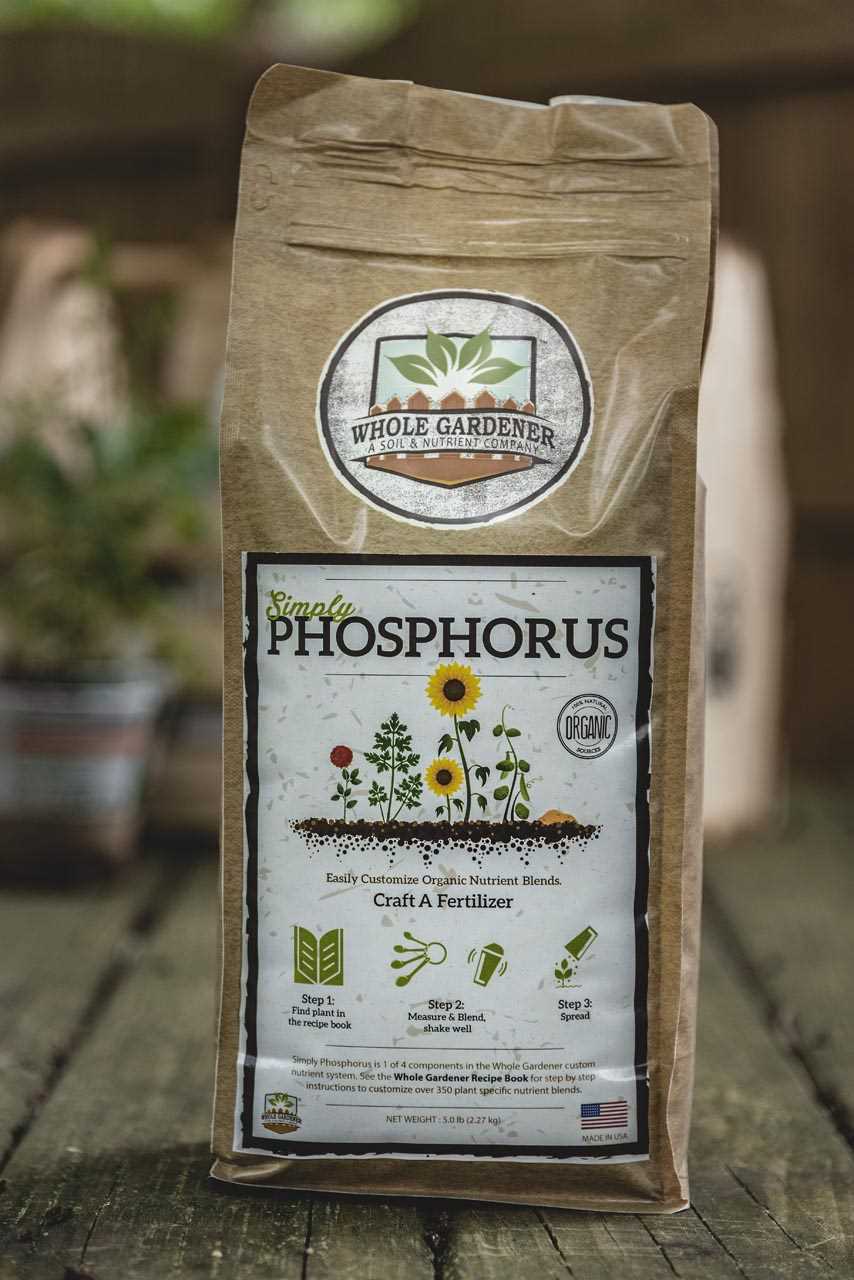
1. Broadcasting
The most common method of applying phosphorus fertilisers is broadcasting. This involves spreading the fertiliser evenly over the soil surface, either by hand or using mechanical spreaders. Broadcasting is suitable for large areas and can be done before or after planting. However, it is important to note that phosphorus fertilisers should not come into direct contact with the seeds or young plants, as it can cause damage.
2. Banding
Banding is another method of applying phosphorus fertilisers, which involves placing the fertiliser in a band or strip below the soil surface. This method is often used in row crops, where the fertiliser is applied in a band alongside the seed or young plants. Banding helps to ensure that the phosphorus is concentrated in the root zone, where plants can more easily absorb it.
3. Side-dressing
Side-dressing is a method of applying phosphorus fertilisers that involves placing the fertiliser in a narrow band alongside the plants, away from the seeds or young plants. This method is commonly used for crops that require additional fertiliser during the growing season. Side-dressing allows for targeted application of phosphorus to the plants that need it most, reducing the risk of nutrient runoff or waste.
4. Foliar Spraying
In some cases, phosphorus fertilisers can be applied as a foliar spray, which involves spraying the fertiliser directly onto the leaves of the plants. This method is often used when plants show symptoms of phosphorus deficiency or when there is a need for a quick response. However, foliar spraying is not as effective as other methods of application, as the phosphorus is not readily absorbed through the leaves.
5. Injection
Injection is a method of applying phosphorus fertilisers that involves injecting the fertiliser directly into the soil. This method is commonly used in drip irrigation systems, where the fertiliser is injected into the irrigation water and delivered directly to the plant roots. Injection allows for precise placement of the fertiliser and reduces the risk of nutrient loss or waste.
6. Incorporation
Incorporation is a method of applying phosphorus fertilisers that involves mixing the fertiliser into the soil before planting. This can be done using tillage equipment or by hand. Incorporation helps to ensure that the phosphorus is evenly distributed throughout the root zone and reduces the risk of nutrient runoff or loss. However, it is important to avoid deep placement of the fertiliser, as this can limit the availability of phosphorus to the plants.
7. Fertigation
Fertigation is a method of applying phosphorus fertilisers that involves mixing the fertiliser with irrigation water and delivering it directly to the plants through drip irrigation systems. This method allows for precise application of the fertiliser and reduces the risk of nutrient loss or waste. Fertigation is most commonly used in greenhouse or hydroponic systems, where the nutrient solution is delivered directly to the plants’ roots.
Conclusion
There are various methods of applying phosphorus fertilisers, each with its own advantages and considerations. The choice of method depends on factors such as the type of crop, soil conditions, and equipment available. It is important to carefully consider the needs of the plants and choose the most appropriate method to maximize efficiency and minimize nutrient loss.
Q&A:
What are phosphorus fertilisers?
Phosphorus fertilisers are substances that contain phosphorus in a form that plants can readily absorb. They are commonly used to improve the growth and development of plants by supplying them with essential nutrients.
Why is phosphorus important for plants?
Phosphorus is an essential nutrient for plants as it plays a vital role in various biological processes, including energy transfer, photosynthesis, and cell division. It is needed for vigorous root development, flowering, and fruiting.
What are the different types of phosphorus fertilisers?
There are several different types of phosphorus fertilisers available, including monoammonium phosphate (MAP), diammonium phosphate (DAP), superphosphate, and triple superphosphate. Each of these fertilisers has different nutrient compositions and release rates.
How should phosphorus fertilisers be applied?
Phosphorus fertilisers should be applied based on the nutrient requirements of the specific plants being grown. It is important to follow the recommended application rates provided by the manufacturer, as excessive application of phosphorus can lead to environmental pollution and damage to plants.
Are there any environmental concerns associated with phosphorus fertilisers?
Yes, there are environmental concerns associated with the use of phosphorus fertilisers. Excessive application of phosphorus can lead to runoff into water bodies, which can cause eutrophication and harm aquatic life. It is important to use phosphorus fertilisers responsibly and follow recommended application practices to minimize these environmental impacts.
Video:
5 most richest sources of Phosphorus for your plants. #gardeningtips #gardeningideas







